Abstract
BACKGROUND: Cystic fibrosis is an inherited condition with a high mortality and morbidity. The aims of this study were to assess quality of life in a population of adults with cystic fibrosis, to compare quality of life with published scores from a healthy population and other patient groups, and to examine the relation between quality of life and other measured clinical variables. METHODS: Patients over 16 years of age attending an adult cystic fibrosis outpatient clinic were surveyed at a time when they were clinically stable. A self-complete questionnaire was administered which comprised the Nottingham Health Profile (NHP) together with six additional questions related to cystic fibrosis. RESULTS: Completed questionnaires were obtained from 240 subjects (100 women) of median age 26 years (range 16-56). Mean (SD) forced expiratory volume in one second (FEV1) was 49 (26)% predicted, forced vital capacity (FVC) was 68 (26)% predicted, and the FEV1:FVC ratio was 59 (16)%. In this cross sectional study different patterns of perceived quality of life were seen in men and women. In part 1 of the NHP there was an age related trend compared with norms in men, with more distress/disability in the dimensions of emotion, sleep, and social isolation in the older age groups. In women there was no age related trend in the degree of distress/disability compared with norms. The mean score was different from norms in the dimensions of pain, emotion and sleep. For the patients with cystic fibrosis as a whole the scores in part 1 were comparable with published scores of patients with minor non-acute conditions. Scores in part 2 of the NHP for men were different from norms in six of the seven areas of daily living (all except home life). For women the scores were different from norms in the areas of looking after the home, social life, hobbies, and holidays. There were correlations between several of the quality of life dimensions and other measured variables such as FEV1, breathlessness score, and the time spent on home treatment. CONCLUSIONS: Men and women with cystic fibrosis have different patterns of perceived quality of life, and there is an age related trend of perceived quality of life in men in some dimensions. Quality of life scores in this group, as assessed by the NHP, are similar to those reported in subjects with minor non-acute conditions.
Full text
PDF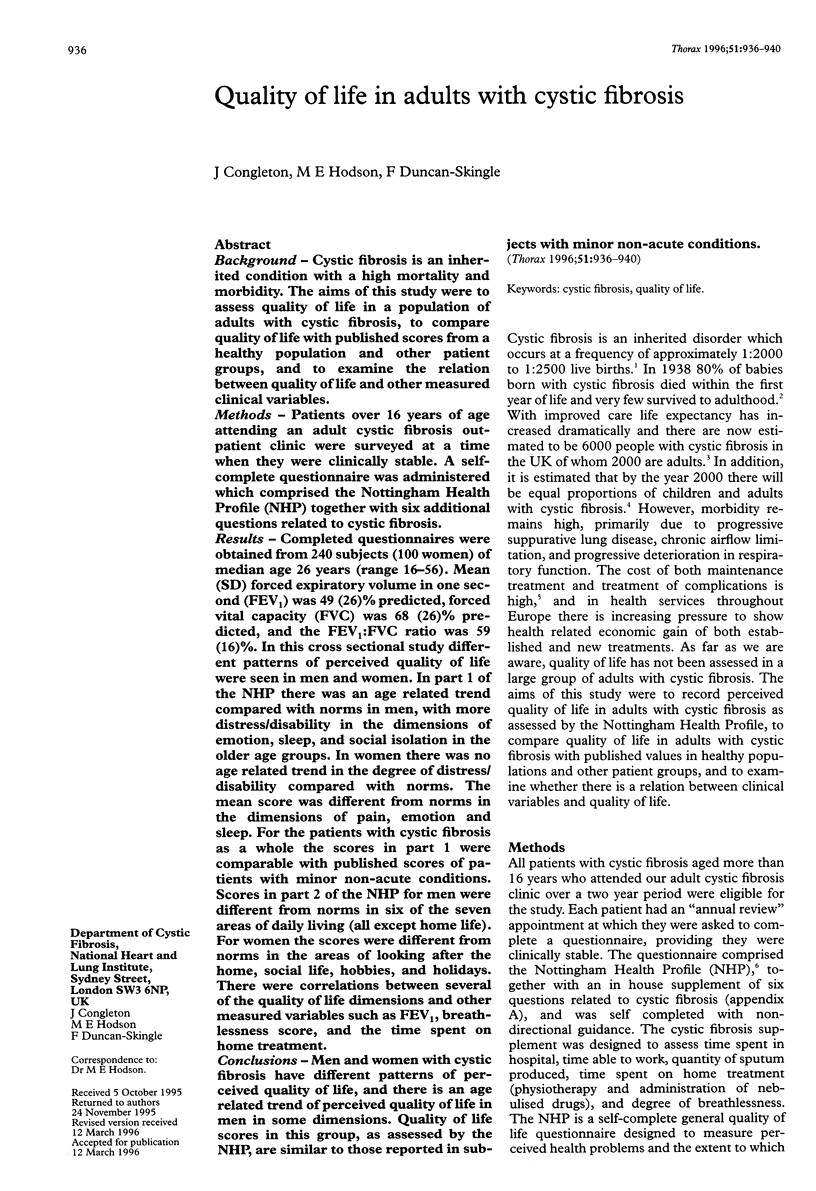
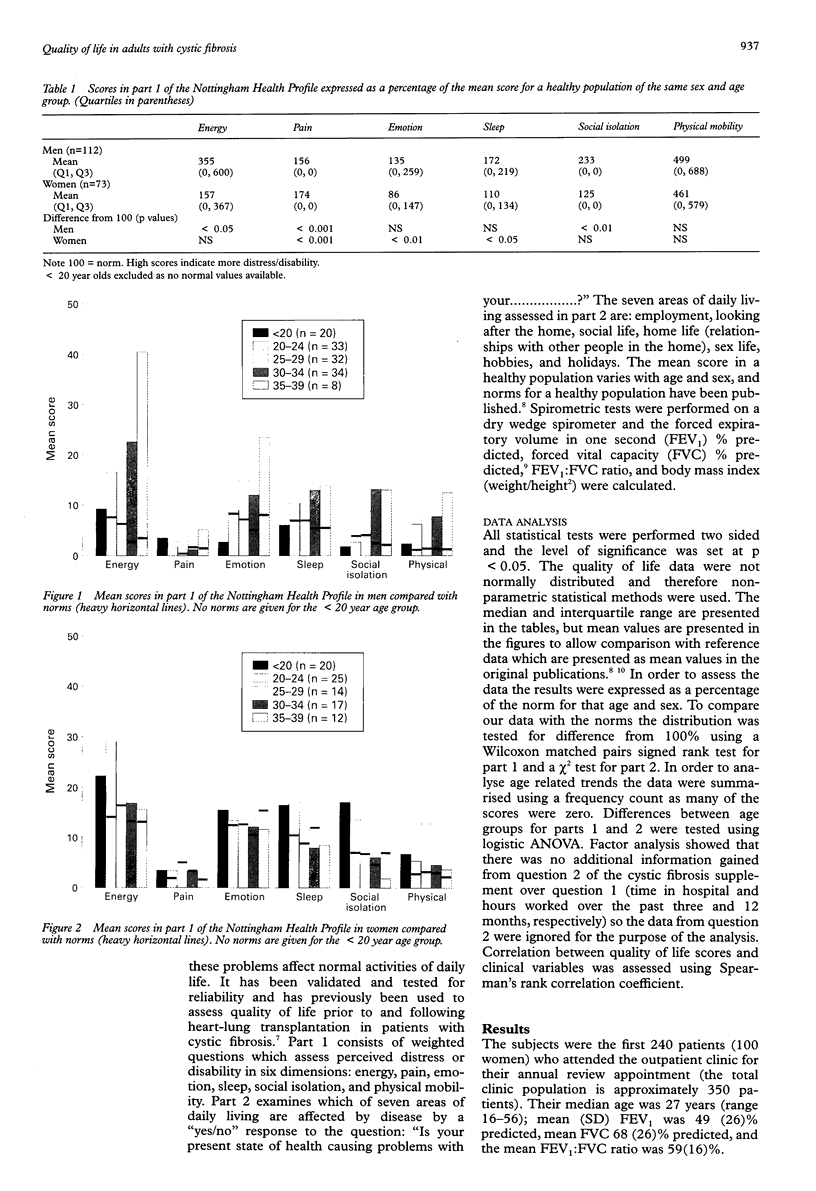
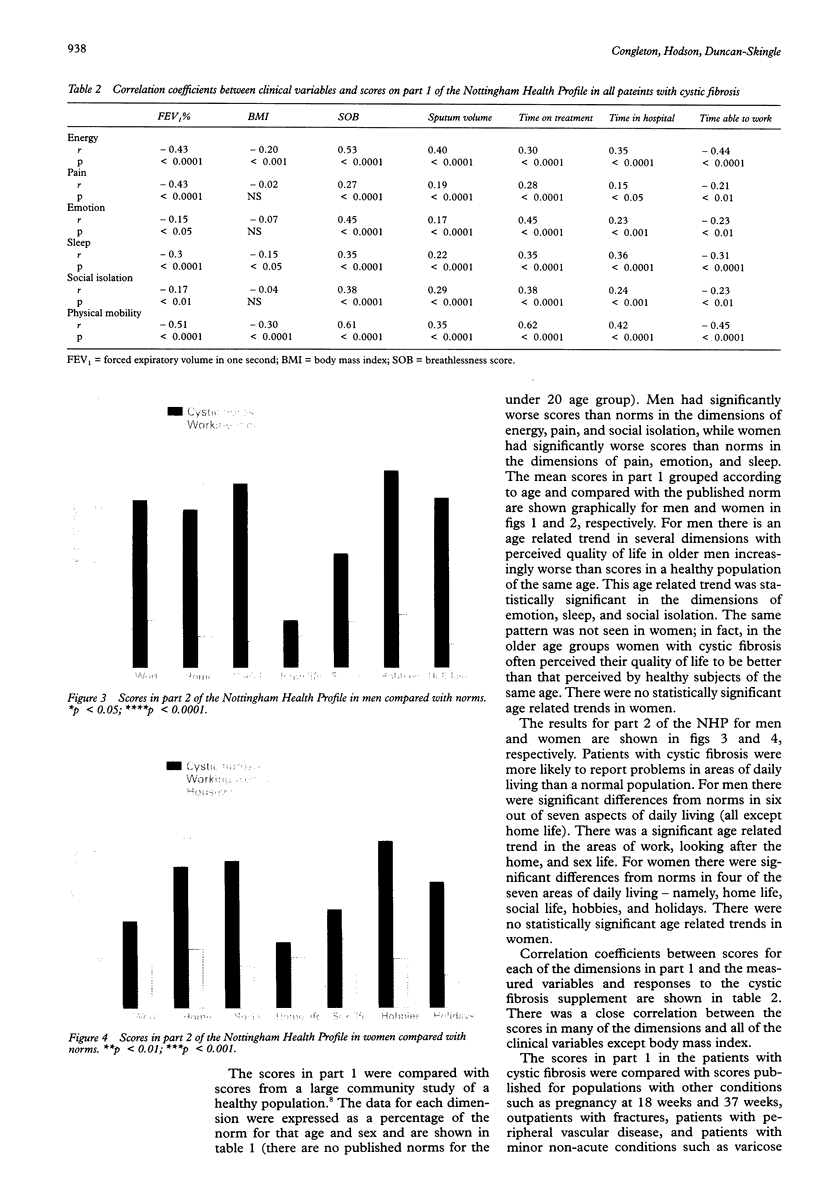
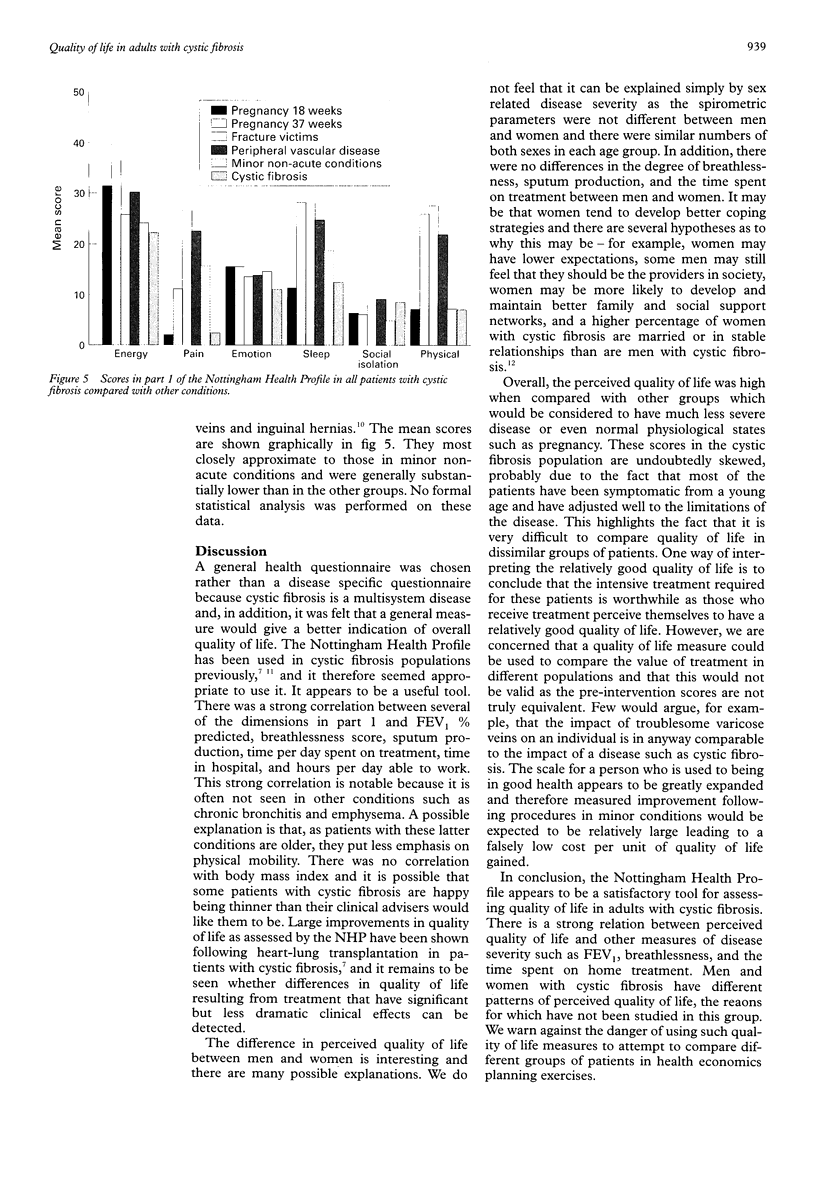
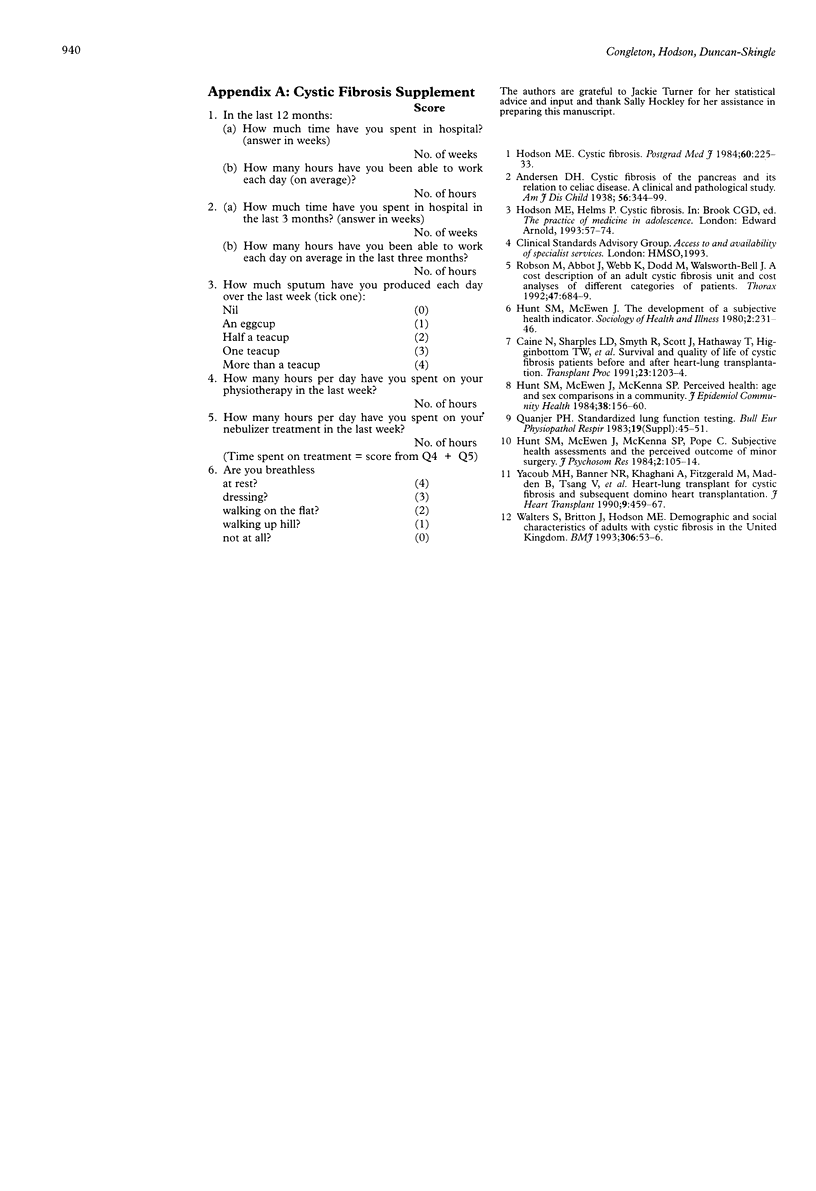
Images in this article
Selected References
These references are in PubMed. This may not be the complete list of references from this article.
- Caine N., Sharples L. D., Smyth R., Scott J., Hathaway T., Higenbottam T. W., Wallwork J. Survival and quality of life of cystic fibrosis patients before and after heart-lung transplantation. Transplant Proc. 1991 Feb;23(1 Pt 2):1203–1204. [PubMed] [Google Scholar]
- Hodson M. E. Cystic fibrosis. Postgrad Med J. 1984 Mar;60(701):225–233. doi: 10.1136/pgmj.60.701.225. [DOI] [PMC free article] [PubMed] [Google Scholar]
- Hunt S. M., McEwen J., McKenna S. P. Perceived health: age and sex comparisons in a community. J Epidemiol Community Health. 1984 Jun;38(2):156–160. doi: 10.1136/jech.38.2.156. [DOI] [PMC free article] [PubMed] [Google Scholar]
- Robson M., Abbott J., Webb K., Dodd M., Walsworth-Bell J. A cost description of an adult cystic fibrosis unit and cost analyses of different categories of patients. Thorax. 1992 Sep;47(9):684–689. doi: 10.1136/thx.47.9.684. [DOI] [PMC free article] [PubMed] [Google Scholar]
- Yacoub M. H., Banner N. R., Khaghani A., Fitzgerald M., Madden B., Tsang V., Radley-Smith R., Hodson M. Heart-lung transplantation for cystic fibrosis and subsequent domino heart transplantation. J Heart Transplant. 1990 Sep-Oct;9(5):459–467. [PubMed] [Google Scholar]







